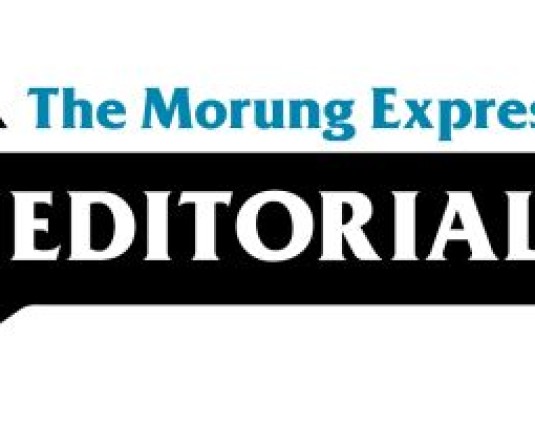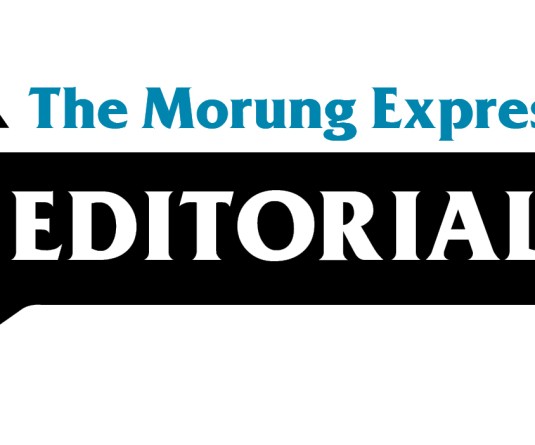
Moa Jamir
With the electoral campaign in full swing for the upcoming general election to the 14th Nagaland Legislative Assembly on February 27th, voters are being consistently wooed with both parties' manifestos and individual pledges. Despite the drive for a "clean election," the offering of incentives, both in kind and cash, cannot be ruled out during such intense canvassing for voters' choices.
Elections in Nagaland also have unique characteristics as village, clan, and regional-tribal dynamics often take priority over other issues. It often becomes a question of who is contesting, rather than from what party or what issues an intending candidate is espousing, as well as the positions they take on issues. Invariably, there is clamour for tickets to contest from both the ruling party in the state and the centre, as observed in the run-up to the announcement of candidates by various parties for the ensuing elections in Nagaland.
Glossy manifestos, pledges, and incentives aside, as the list of contestants is being finalized by the state election office, it is imperative to gauge the former's stance to enable voters to make informed decisions while exercising their constitutional rights as citizens. The issues can be both constituency and state-level. Accordingly, it is essential to raise some important questions on how each party or candidate prioritizes the issues facing the state.
Among others, what is their position on persistent unemployment in Nagaland? According to the annual Periodic Labour Force Survey (PLFS), Nagaland has the dubious distinction of having the highest unemployment rate among all states over the last four years. In 2020-21, the usual status of unemployment for persons over the age of 15 was 19.2% in Nagaland, the highest in India. The All-India average during the same period was 4.2%. The PLFS for 2020-21 highlighted an even more concerning scenario of 55.2% unemployment among youth in the 15-29 years age group, compared to the national average of 12.9%. Do the political parties or candidates have a clear stance on this issue?
A closely related issue is the need for concrete plans and strategies to empower youth by facilitating employment opportunities. Creating backdoor appointments would benefit only a few and further deteriorate the state of affairs, but creating job opportunities would enhance empowerment and economic growth.
What is their position on healthcare? Although Nagaland does not yet have a medical college, various national surveys over the years have highlighted that the number of health centres in the state has increased significantly in the last 15 years. However, there is still an acute shortage of specialists and other skilled workers in many community health centres (CHCs). According to the Rural Health Statistics 2021-22, only 7 of the 92 specialist doctors required at various CHCs in Nagaland were in position, indicating a 90.22% shortfall of the requirement prescribed by the Indian Public Health Standards (IPHS) norm. What is the plan to offer qualitative, accessible, and affordable health services?
Another area needing urgent attention is the provision of quality and affordable education, particularly at the upper primary and secondary level. A perennial challenge in Nagaland, dropout rate becomes more perceptible as the students move to higher classes. The latest Annual Status of Education Report (ASER) 2022 and Unified District Information System for Education Plus (UDISE+) 2021-22 (Flash Statistics) affirm such conclusion. The former highlighted that in rural areas, almost 1 in 10 children between the ages of 15-16 years old were not attending school while the latter informed that the dropout rate increased from 4% in the upper primary level (Classes 6-8) to 18.9% and 17.5% at the secondary level (Classes 9-12).
To improve education in Nagaland, political parties and contenders need to present concrete solutions. Measures to enhance transparency and curb corruption, as well as positions on environmental protection, need to be considered. Additionally, steps need to be taken to address surging state deficits, road infrastructure, and access to basic amenities, which are pressing concerns at both the constituency and state levels. For present legislators, question on usages of MLA’s Local Area Development Funds (MLA-LAD) would be a starter.
Above all, the Naga political issue needs to be approached from different perspectives, rather than relying on passing resolutions and forming opposition-less governments ad nausem.
Nevertheless, if citizens base their voting decisions on factors other than the most pressing issues facing the State, they are essentially surrendering their constitutional right to positively participate in the democratic process.
For any feedback, drop a line or two to jamir.moa@gmail.com





